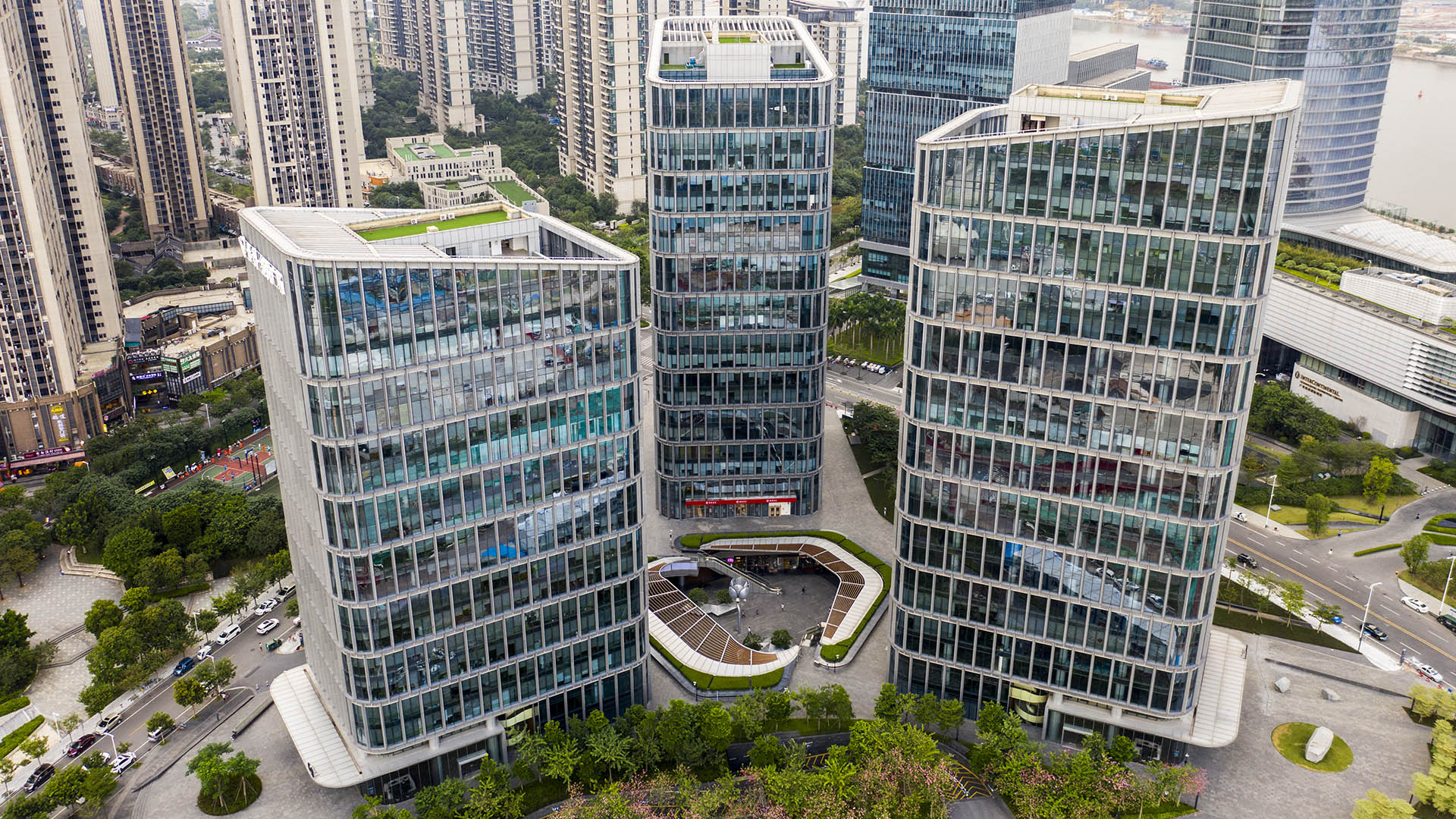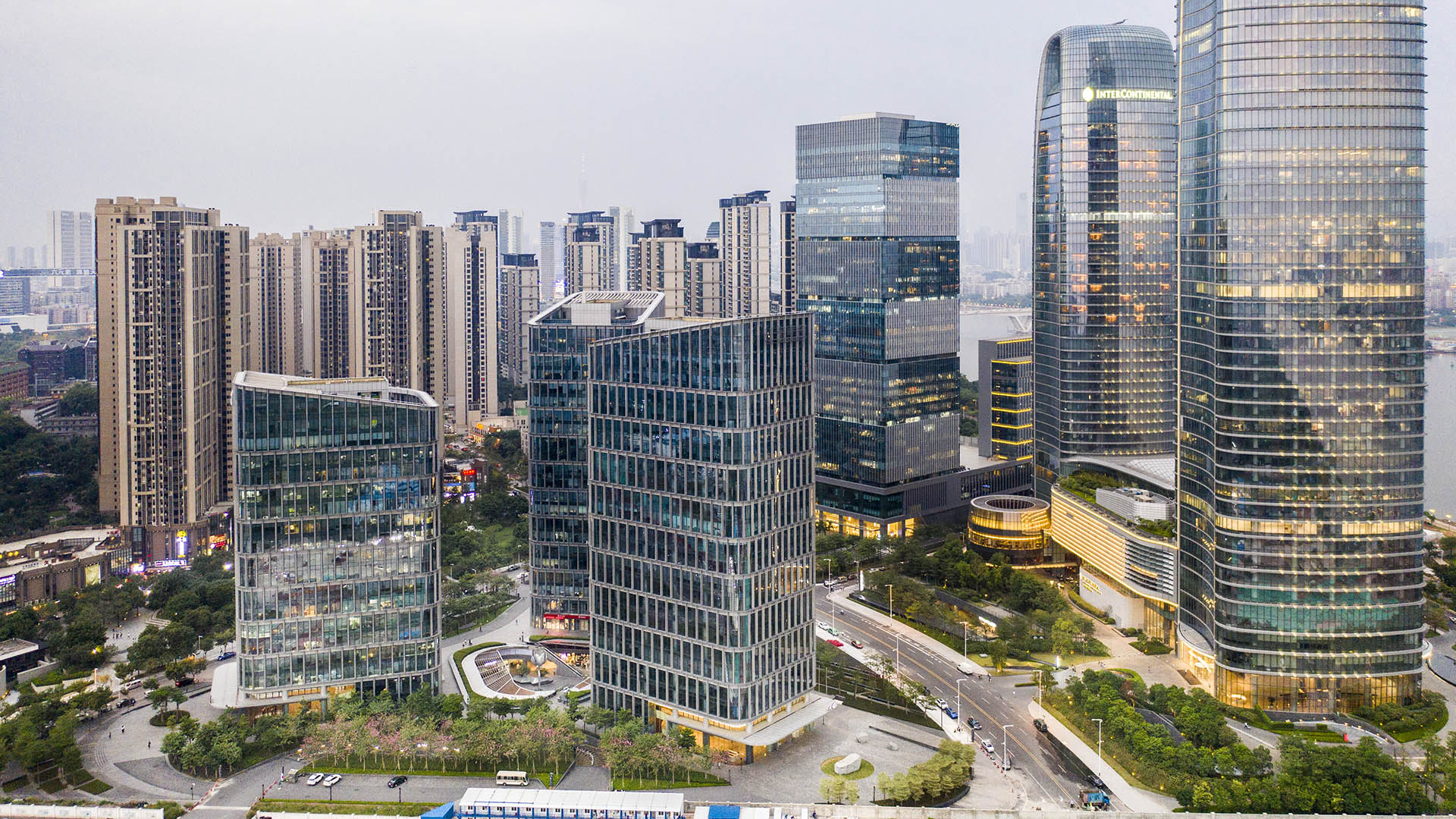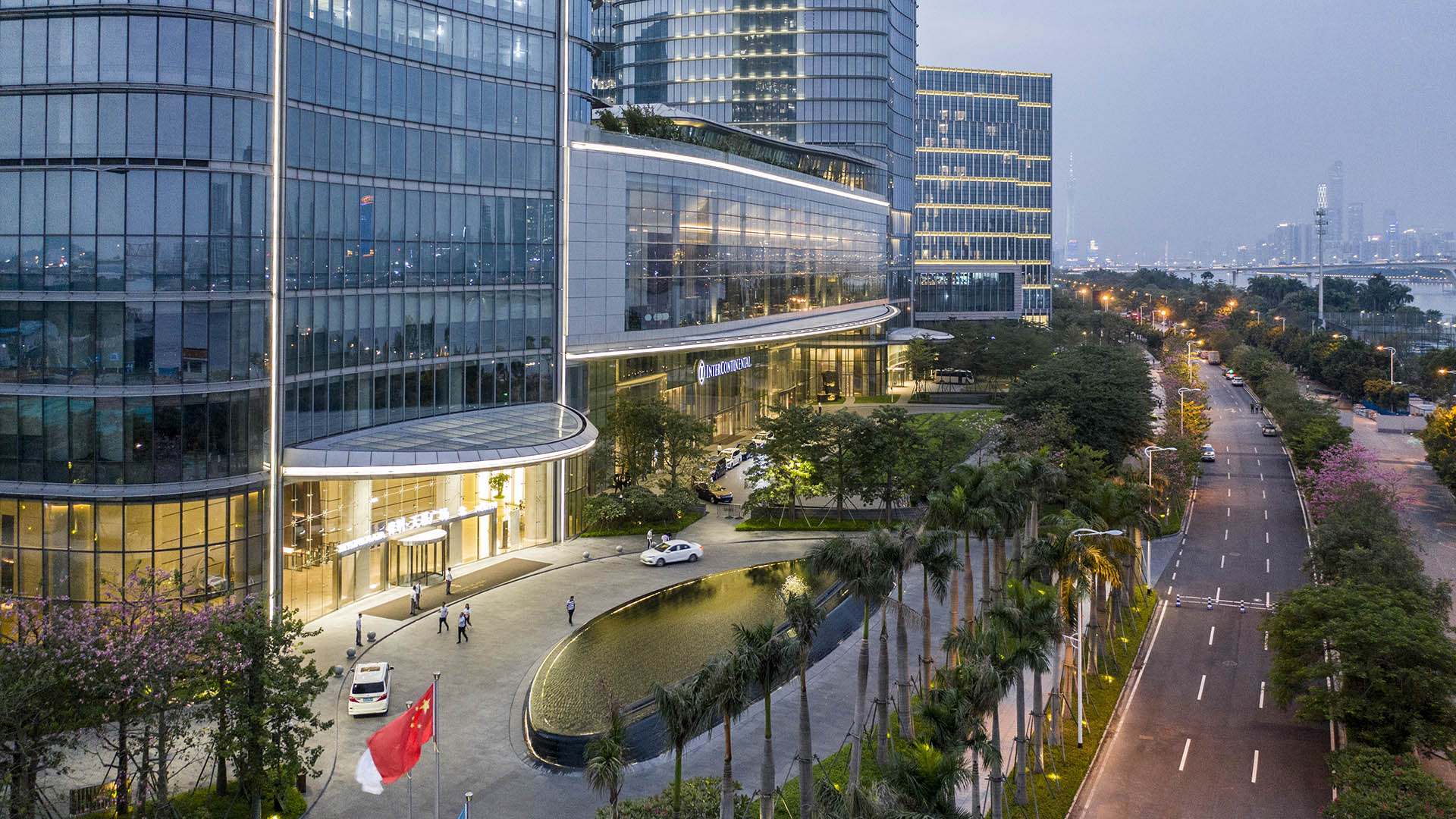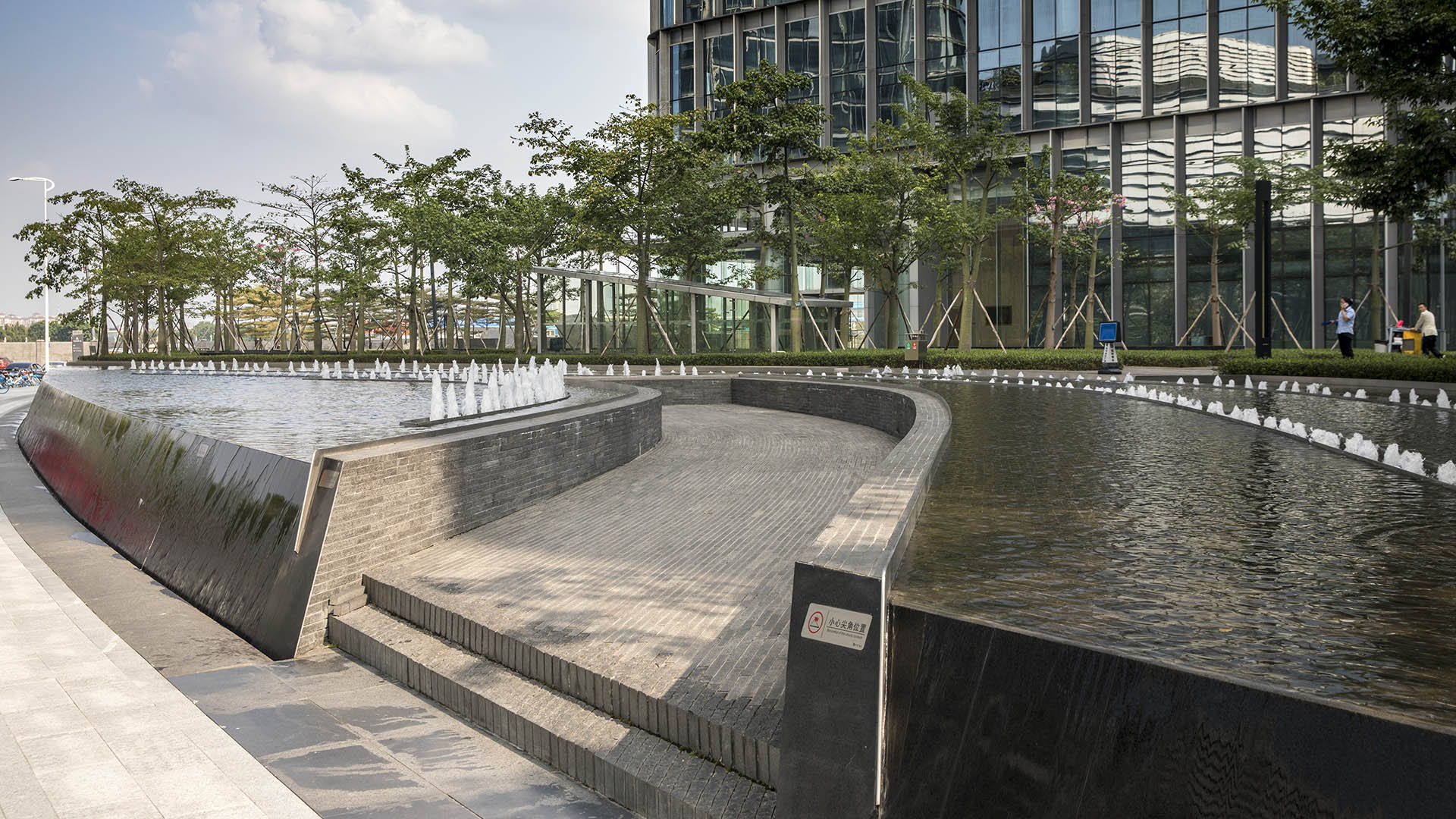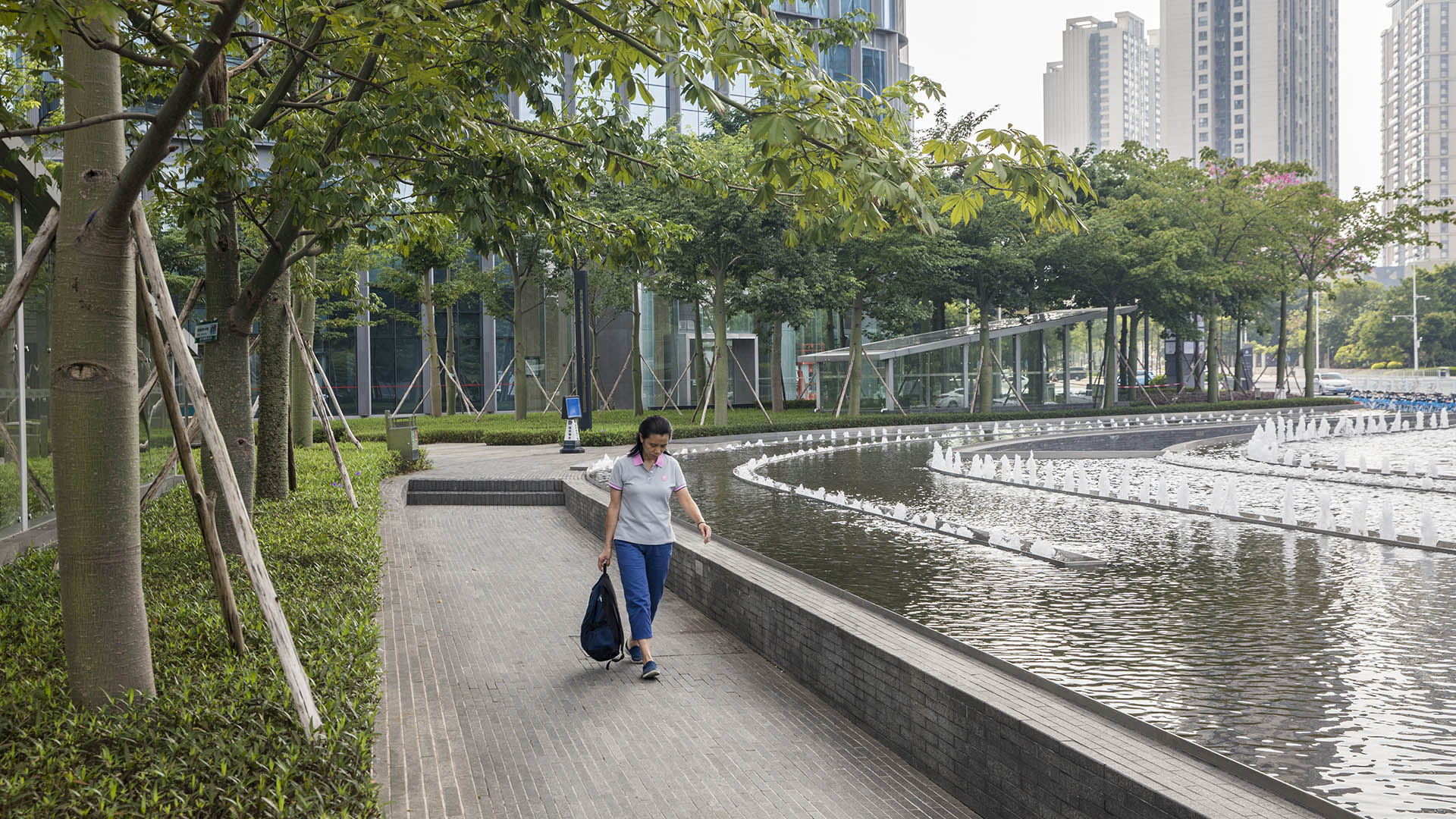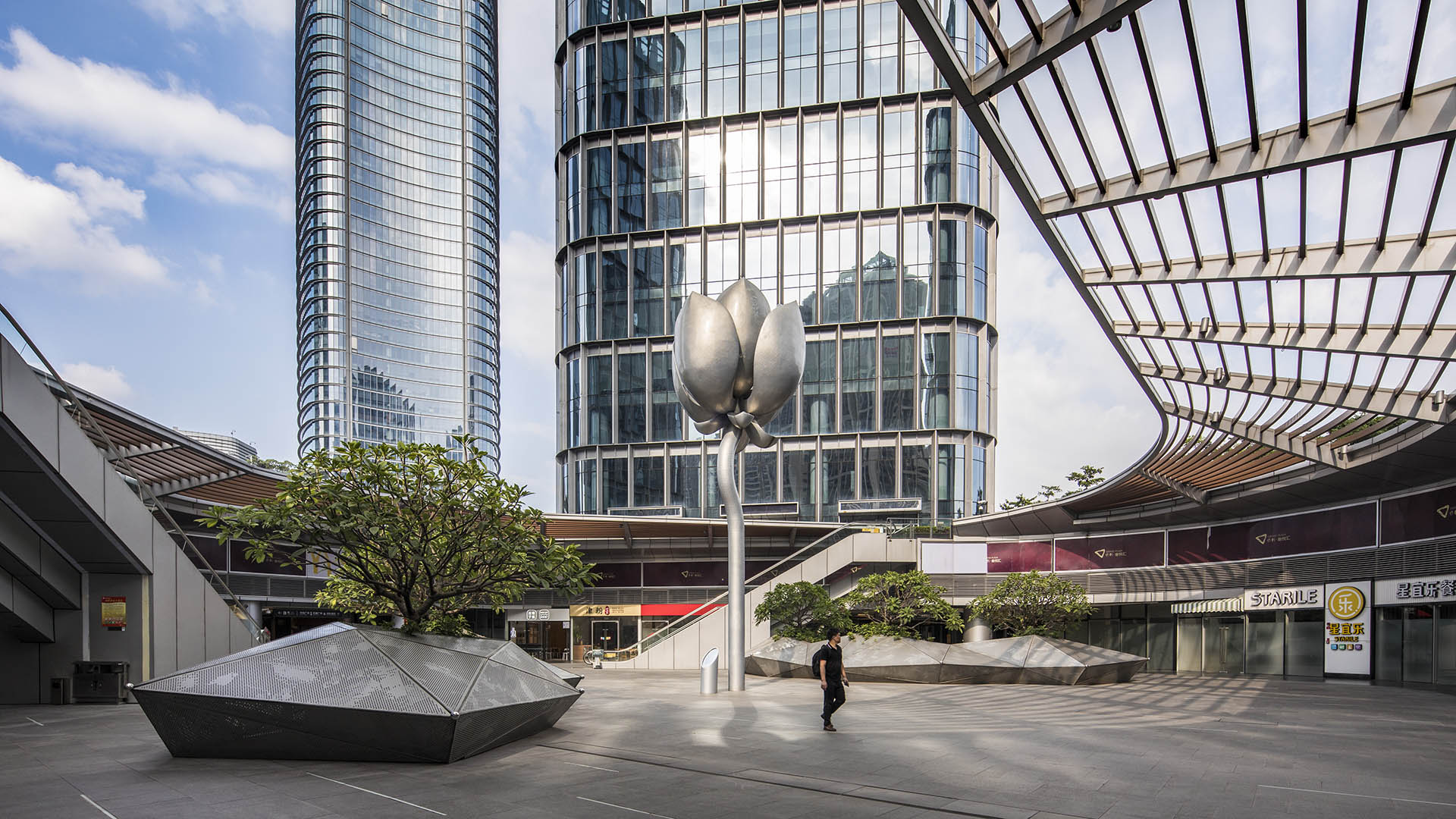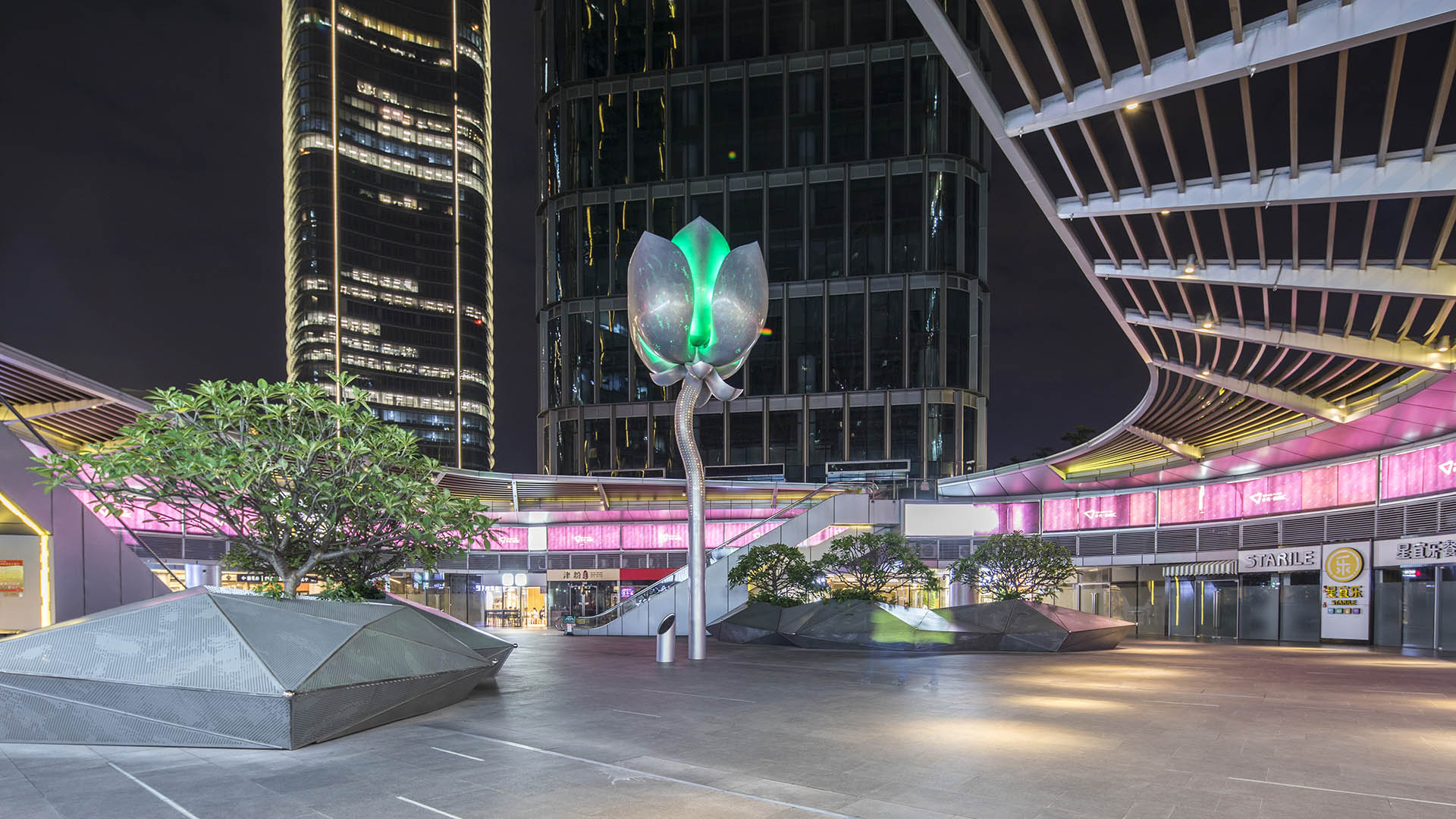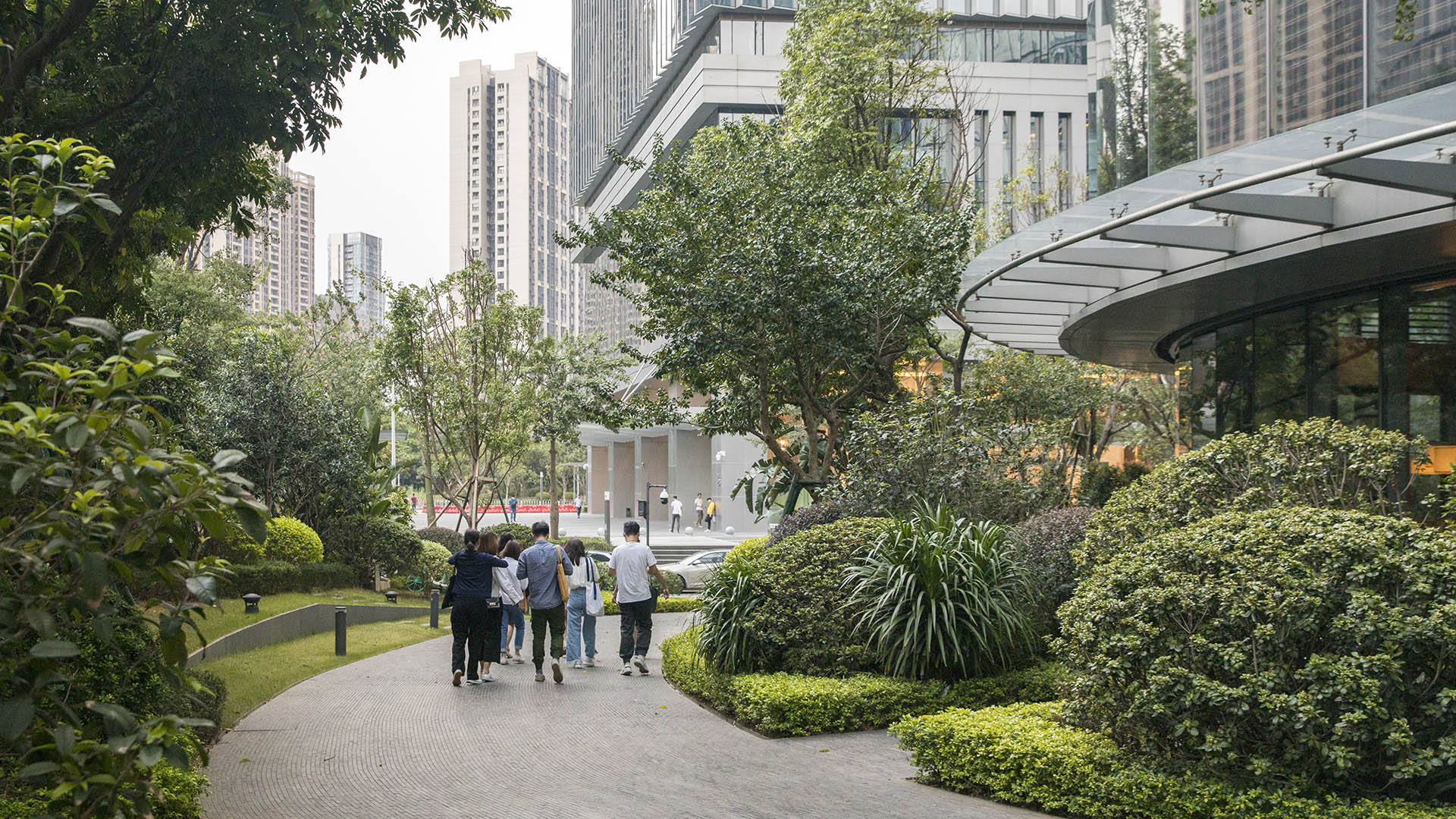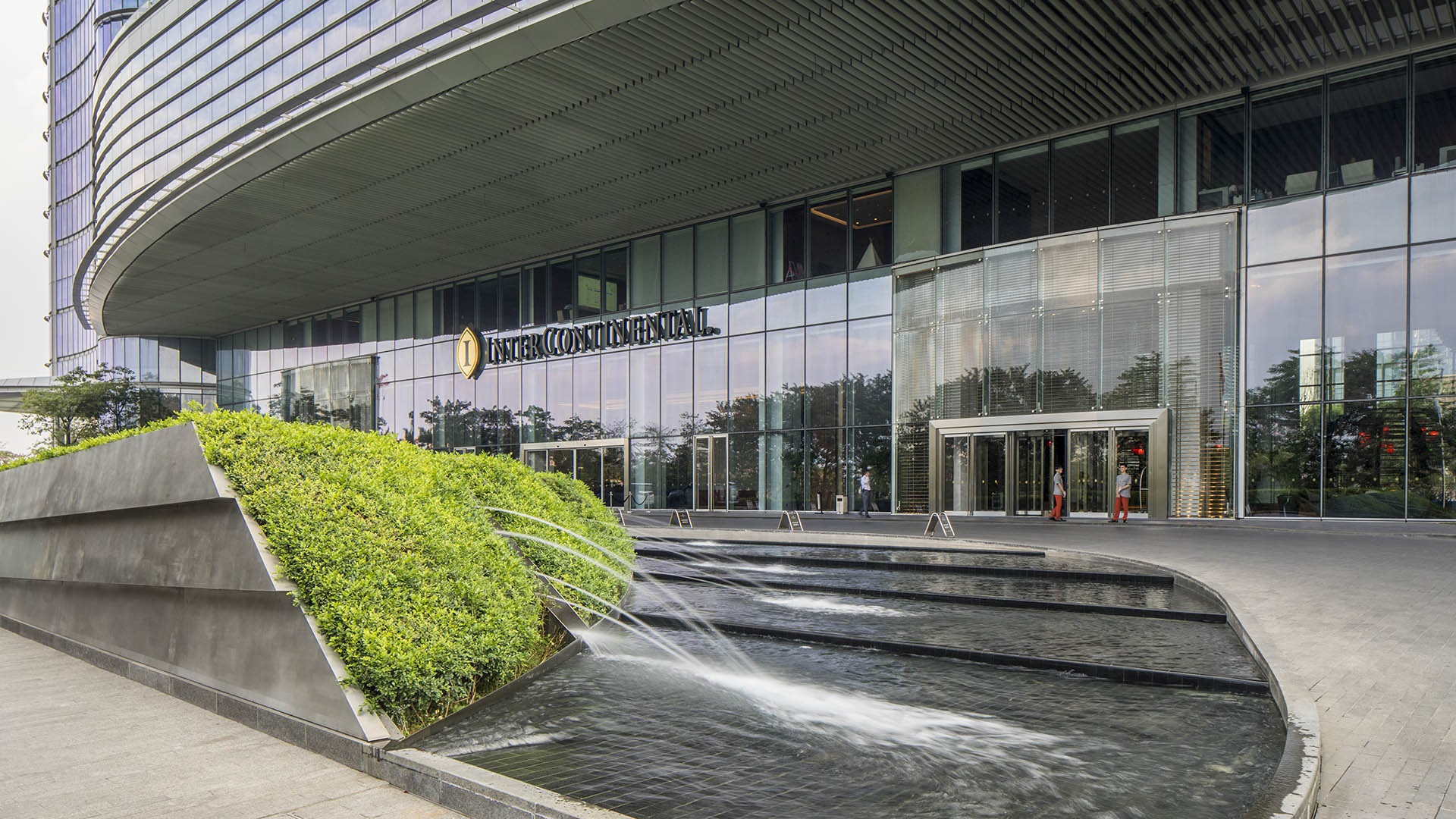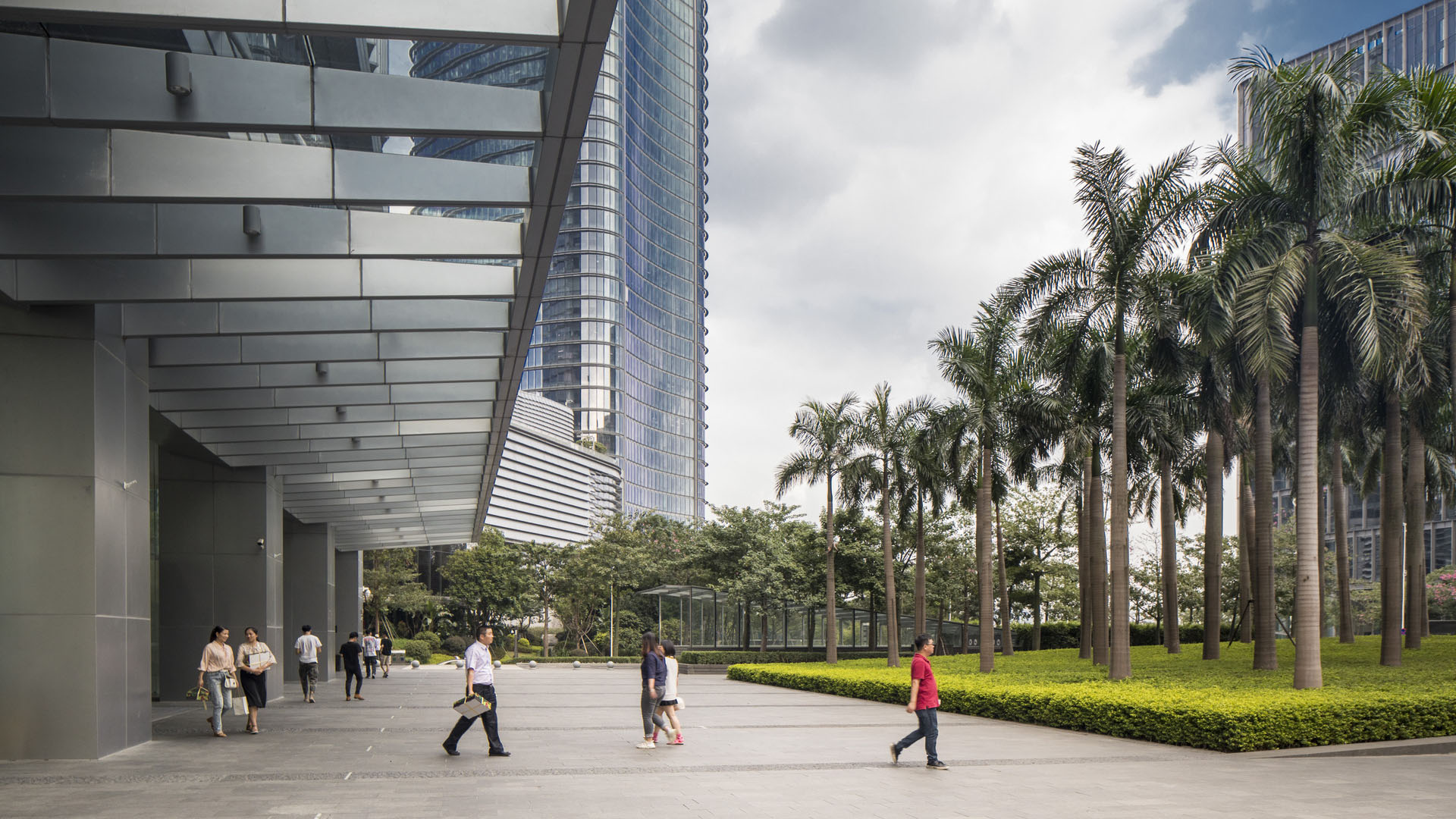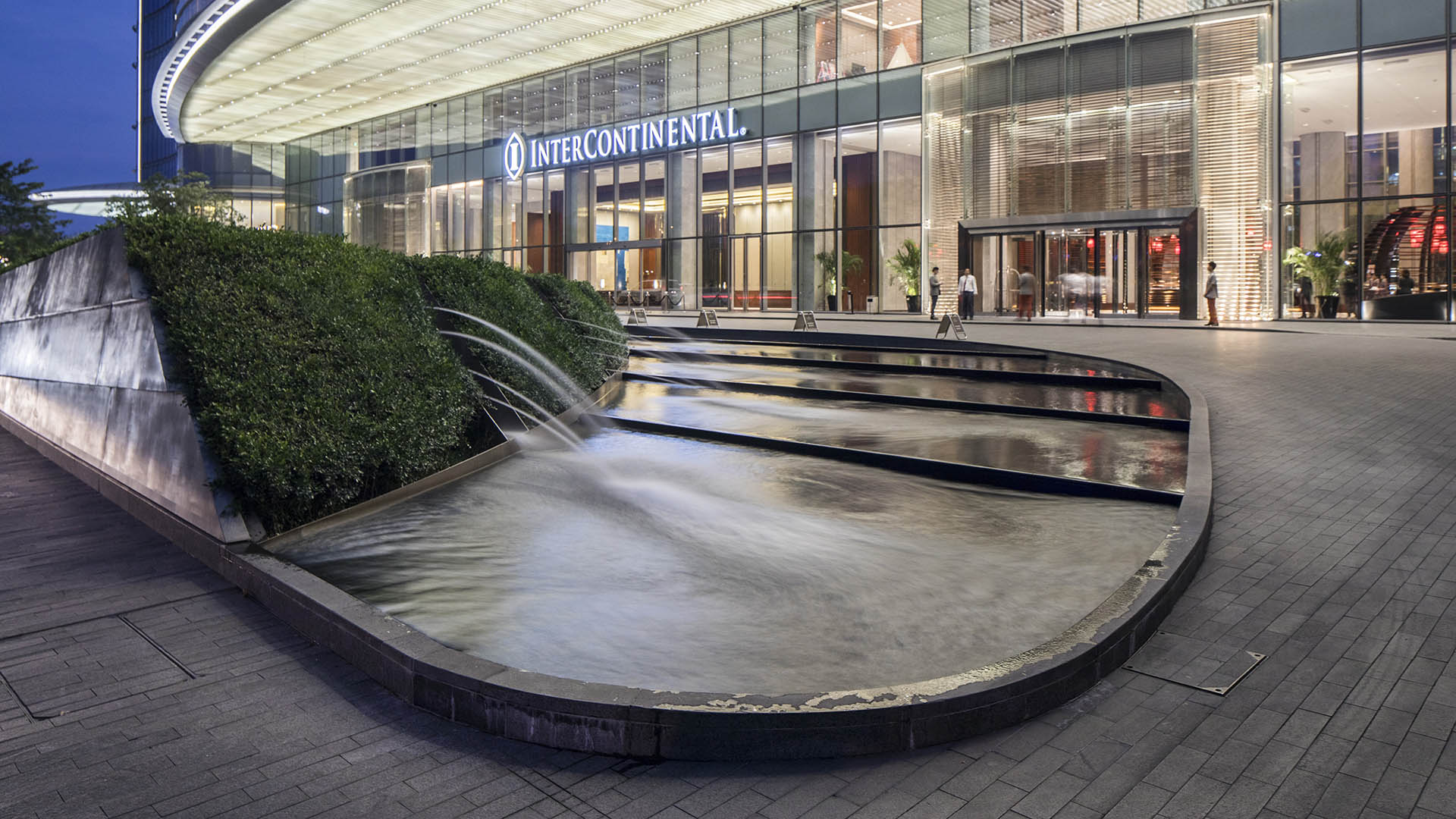The iconic architecture and riverside context that characterize Poly Pazhou were inspirations in this SWA/SOM collaboration, which also took adjoining development in the burgeoning region into account. Broad, sweeping landscape, featuring diverse local plant species, embraces both the soaring buildings and the Pearl River corridor, extending its spatial characteristics well beyond the site. Along its perimeter, the landscape framework integrates with the adjoining parcels 5 and 10, forming a distinct and unified streetscape within the neighborhood.
Each of the principal architectural components are individually addressed. The office megatower is echoed by a great crescent fountain basin at its arrival court, its fluid horizontal surface and infinity edges reflecting the tower and gesturing toward the river. The tower’s south side features an intimately scaled garden setting with direct access from the south road and short-term parking. At the second tower, sculptural, forested landforms greet and define the residential arrival court, offering residents a level of visual and acoustical privacy from adjacent hotel arrivals and vehicular ramps. Additionally, these landforms screen the project’s cooling towers and integrate them with the overall landscape design.
Central open spaces at the hotel’s arrival and south garden create an inviting visual linkage along the property’s north-south axis. To the north, cascading river gardens orient the hotel and conference arrival terrace to the riverfront beyond, while to the south, broad, programmable special events gardens with lounge and dining terraces serve the hotel and conference center. A central water plane links the hotel lobby lounge to the gardens and the central fountains between parcels 4 and 5. Although separated by a road, these fountain basins are raised and configured to visually merge together as a larger feature. Pedestrian linkage below the fountains and road connect to a sunken water court linked to the hotel’s B1 health club facility and building concourse. In addition to introducing light and air to these facilities, the sunken court serves to provide part of the project’s overall fresh air intake requirements. Lastly, the circulation network on site links pedestrians from road crossings, subway connections, and bus station stops to principal building entry points and landscape destinations.
Shaoxing Paojiang Sales Center
As a model home sales center, the first concern of this project is to guide visitors from the entrance to the exhibition center in an elegant and impressive way. Shaoxing is famous for its natural and cultural heritage, which inspired the design of several elements: a “blue galaxy” pool, southern concept frame wall, galaxy walk, inkwell pool, and flower garden...
Beijing Finance Street
Awarded after an international competition, the Beijing Finance Center Master Plan creates an international destination in West Beijing. The project, which includes a mix of uses—housing, retail, hotel office, and cultural facilities—is focused in terms of the landscape design of a central park known as “The Heart” of western Beijing. SWA’s w...
Rosewood Sand Hill Hotel
SWA provided full landscape architectural services for this mixed-use development, which includes a 120-room luxury hotel, five villa residences, a supporting office complex, fitness center, spa and multi-use space. The Sand Hill Hotel and associated offices are nestled onto a dramatic hillside that slopes toward the Santa Cruz Mountains immediately beyond I-2...
Rodeo 39
As larger big-box companies continue to close their brick-and-mortar stores, each leaves behind a sizable void within the communities these centers once served. Rodeo 39, seeks to break the models of traditional retail that are founded on convenience and visibility and shift the focus to community aspirations and user experience.
The 31,000-square-foot ...



